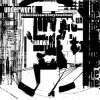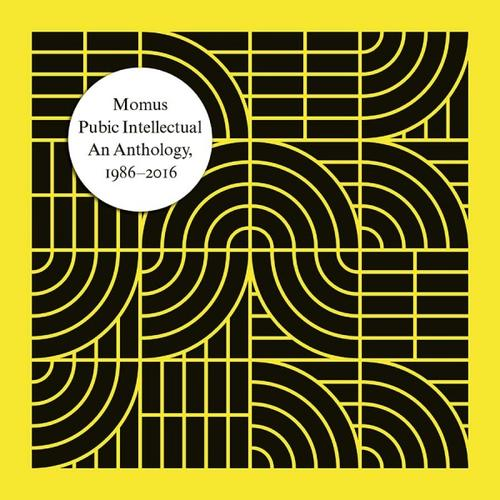 Maybe it says something about the staid state of mainstream music fare at the moment but there has been a glut of reissues recently. 20 years after its first release, Underworld’s dubnobasswithmyheadman is the latest album to be remastered and repackaged in search of a new audience. In this case, if for no other reason that you have not heard it before, the re-release is worthwhile. Apparently the remastering has significantly improved an album that already sounded great, however the label was only prepared to provide access to a streamed MP3 version, which means that it’s not possible to comment on the impact of this.
Maybe it says something about the staid state of mainstream music fare at the moment but there has been a glut of reissues recently. 20 years after its first release, Underworld’s dubnobasswithmyheadman is the latest album to be remastered and repackaged in search of a new audience. In this case, if for no other reason that you have not heard it before, the re-release is worthwhile. Apparently the remastering has significantly improved an album that already sounded great, however the label was only prepared to provide access to a streamed MP3 version, which means that it’s not possible to comment on the impact of this.
At the time that dubnobasswithmyheadman came out, the UK dance music scene was in an incredibly creative era, with exciting music emanating from all over the country, from just about every city which boasted a vibrant club scene. The media may have been consumed by Blur vs Oasis, but a whole other scene was blooming and enthralling many others who could not be bothered with the posturing and self-regarding Brit-poppers.
Even within such a vibrant and productive context, dubnobasswithmyheadman stood out and as a ground-breaking album. Underworld’s sound brought together the momentum and innovation of UK dance music at the time, and channelled into that a further dimension of beat poetry-inspired lyrical invention that was truly unique. While it was true that the likes of Slam were producing similarly atmospheric sounds at the time, Underworld were able to add to that, through Karl Hyde’s stream of consciousness vocals, a voice that matched the mood and form of the music perfectly. No one had managed to find a way of marrying techno and vocals, at least not without sounding like a novelty act, nor has done since.
Having said that, Underworld’s approach did not eschew classic house and techno conventions of rhythm or even of arrangement. Indeed, many of the tracks are unashamedly rooted in the genre’s Detroit origins, with respectful nods to the likes of Cybotron and Underground Resistance. In particular, the punk ethic of UR is clearly present. Apart from the the lyrics, much of Underworld’s originality arose from their use of distinct samples, including field recordings, chosen specifically for the tracks on which they featured, which ensured that they did not sound manufactured. These days their approach would seem less remarkable, but at the time it gave them a freshness and encouraged listeners to seek out more of the same, which was also true of the likes of Fluke and Justin Robertson.
The two opening tracks, “Dark and Long” and “mmm… Skyscraper, I Love You,” set the tone, and on first listening the original release heralded the extent to which this was a dance music album like no other before. Swooping synths, wind samples, rolling tom toms, throbbing sub-bass and tambourine on “Skyscraper…” carry you on a dreamlike journey, soaring the heights with the music. Dance music’s ability to be physically and spiritually transformative, driving us to move and feel (together), and in Underworld’s case sometimes had the added dimension of making you think and dream.Hyde’s lyrics are fundamental to the uniqueness of the tracks, while at the same time the echoing rave bleeps and squelches could almost be channelling early instrumentalists like Adamski, but as soon as vocals take a back seat this record loses its power. Even “Spoonman,” where the vocal line is an ever-present monotone delivered through a vocoder, is weaker with the stream of consciousness lost in the mix. The repetition becomes just that, rather than soaring progression with an arresting narrative drive on the more standout tracks, like “Dirty Epic,” where the vocals come back to the fore and the lyrical invention becomes fantastically twisted — “Here comes Christ on crutches.” It’s almost an indie track re-imagined in electronic dance music form to brilliant effect, and eventually Rick Smith and Hyde clearly managed to get Darren Emerson to cave in as the track crescendos and winds out with a slide guitar-riff sample.
The zenith of the album has to be “Cowgirl.” Here the signature Underworld elements are combined with such sheer relentless power that the track blows your socks off. The way the urgency of the initial vocals builds into a kind of ranting, rushing hugeness creates an irresistible momentum even before the kick drum hits. When the 303 crashes into the track and just keeps piling more and more on top, the overall effect is gloriously overwhelming — you just have to let it wash over you.Yes, dubnobasswithmyheadman is worthy of revisiting, and (apparently) the remaster makes what was a great record sound even better. The extras are also worthwhile if you do not already have a copy of “Rez” and are interested in how they managed to make music which such energy that sounded so different from every thing else at the time. Dubnobasswithmyheadman set a bench mark, demanding that subsequent innovators achieve a certain level of creativity at a time when dance music was in danger of turning into a series of niche genre sausage factories, churning out acceptable tunes that were faithful to the creed, but not wholly original. The legacy of Underworld can be seen in the fact that the potential for electronic musical innovation is far from exhausted — the pages of Freq bear testimony to that. Thank you Underworld for launching us forward.
-Jim Bennett-



